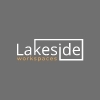Long gone are the days of your parent’s offices: opaque, beige, intimidating, and compartmented. Instead, we’re living in a world where the workplace is somewhere people choose to be in, choose to be inspired by the surroundings and the environment provided and by the diversity of people they have the opportunity to interact with.
Flexible workspaces are the physical manifestation of today’s workforce and workplace revolution. They have become the nucleus of innovation, collaboration, and community. They have become the staple of what a 21st century office should look and feel like. Simply put, flexible workspaces have revolutionized the whole concept of office, they are driving the workplace transformation, and they have become a key player in work-life integration, talent retention, and wellness.
Flexible workspaces have also set the bar high by focusing on hospitality. The workplace has gone beyond being the physical space where we work from, it’s a space that caters to our professional and personal needs, a space that’s able to provide added value through tailored amenities and services–gourmet coffee, mail handling, receptionist services, events –you name it, they’ll deliver.
The modern workplace also takes many shapes and forms, depending on the location and the market they’re catering to. Flexible workspaces are, by all means, flexible in and out of themselves. They offer private space, coworking space, meeting rooms, virtual offices, and more. The idea is to create an environment where people, inspiration and ideas can flow freely at all times, regardless of the room they choose to work from and the time of day.
To guarantee that people feel consistently inspired, flexible workspace operators place emphasis on colors, design, temperature, lighting and furniture. Doing so allows operators to deliver a multisensory experience. While your parents’ office was all about bureaucracy, job title, and keeping up appearances, flexible workspaces are about the lived-experience, collaboration, and innovation, regardless of title, line of work, or income.
As you can well imagine, this is not your traditional description of office space. Quite the contrary, flexible workspaces is where ideas flow freely, where innovation has a home, and where people want to be in (and not just from 9 to 5).
To learn more about how flexible offices can help you and your business, click here.
 April 18, 2017
April 18, 2017  Jason Tiemeier
Jason Tiemeier 




